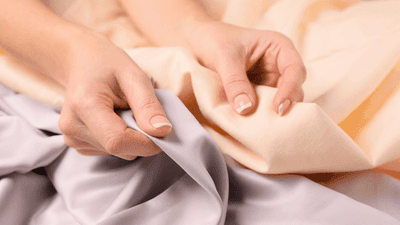The Ultimate Guide to Removing Stubborn Stains from Clothes
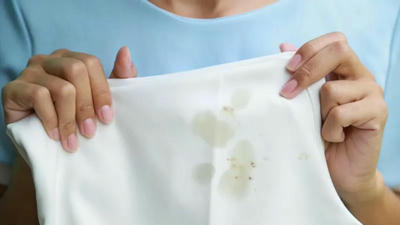
Stains are an inevitable part of life, and they can be particularly distressing when they occur on your favorite garments. Whether it's a splash of wine, a smear of ketchup, or an ink blot, stubborn stains can seem impossible to remove. However, with the right knowledge and techniques, you can effectively tackle these challenges and restore your clothes to their former glory.
Understanding Stains: Types and Causes
Types of Stains
Food and Beverage Stains: Common culprits include coffee, wine, ketchup, grease, and chocolate. These stains often contain pigments or oils that are difficult to extract.
Ink Stains: Ink from pens, markers, or printers can create dark and persistent marks on fabric.
Blood Stains: Whether from a cut or a nosebleed, blood can be tricky because it contains proteins that can bond with fabric when heated.
Grass and Dirt Stains: Perfect for kids and athletes, these stains are usually caused by outdoor activities and contain chlorophyll and dirt.
Oily Stains: Examples include motor oil, grease, or cosmetic products. Oil-based stains can penetrate deeply into fibers and require specific treatments.
Wine and Beverage Stains: Red wine, orange juice, soda, and others can leave behind colorful stains due to their acid and sugar content.
Mold and Mildew Stains: These stains often form in damp clothing or environments and can emit unpleasant odors.
The Science Behind Stains
Understanding how stains work helps in selecting the right treatment method.
Color Pigments: Many food and drink stains contain color pigments that bond to fabric fibers.
Oil vs. Water: Oily stains repel water, which complicates their removal. It is often necessary to use oil-based solvents or detergents to break them down.
Proteins: Stains like blood or dairy contain proteins that can harden when exposed to heat. Cold water is usually more effective in lifting these stains before washing.
The Importance of Quick Action
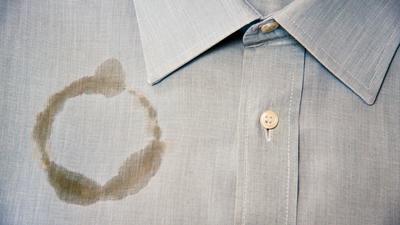
When it comes to stains, acting quickly is crucial. The longer a stain sits, the harder it becomes to remove. Here are some reasons why prompt attention is vital:
Preventing Stains from Setting: Fresh stains are significantly easier to treat than those that have dried and set in.
Reducing Odors: Stains from food or beverages can lead to unpleasant odors if not treated promptly.
Minimizing Damage: Quick response can help prevent damage to the fabric, preserving its color and integrity.
Essential Stain Removal Supplies
Having the right supplies on hand is essential for effectively tackling stains. Here’s a list of must-have items for your stain removal arsenal:
Cleaning Agents and Solutions
White Vinegar: Great for treating a variety of stains, vinegar can help neutralize odors and remove color stains.
Baking Soda: An effective abrasive that can help lift stains and remove odors when made into a paste with water.
Dish Soap: Effective for cutting through grease and oil stains, dish soap can work wonders on fabric.
Hydrogen Peroxide: A gentle bleaching agent that can help remove food and protein stains from white or colorfast fabrics.
Rubbing Alcohol: Useful for ink stains and can help dissolve oils and adhesives.
Laundry Detergent: A high-quality laundry detergent should be your go-to for general stain removal, especially enzyme-based formulas.
Stain Remover Spray: Look for pre-treatment sprays specifically designed to tackle tough stains.
Tools and Accessories
Microfiber Cloths: These are soft, absorbent, and perfect for dabbing at and lifting stains without spreading them.
Soft-Bristled Brush: Useful for scrubbing at stains gently without damaging the fabric.
Spray Bottles: Ideal for mixing and applying DIY cleaning solutions.
Buckets: For soaking stained items in solutions or for mixing cleaning agents.
Protective Gloves: Always wear gloves to protect your hands when dealing with certain cleaning agents.
Step-by-Step Stain Removal Techniques
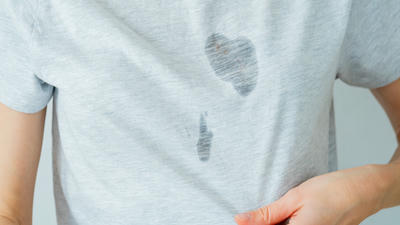
Every stain is unique, and the treatment may depend on its nature. Below, you will find detailed techniques for addressing various types of stains.
Food and Beverage Stains
Method for Coffee and Tea Stains
Blot Up Excess: Use a clean cloth to blot away as much liquid as possible without rubbing it in.
Cold Water Rinse: Rinse the fabric under cold water from the back to push the stain out.
Apply Stain Remover: Apply a stain remover or a mixture of liquid laundry detergent and cold water directly onto the stain.
Rinse Again: Rinse thoroughly before washing as usual.
Method for Grease and Oil Stains
Blot Excess Oil: Use a paper towel or cloth to absorb any excess oil.
Sprinkle Baking Soda: Cover the stain with baking soda to absorb the grease. Let it sit for 30 minutes, then brush off.
Use Dish Soap: Apply a few drops of dish soap to the stain, gently rub it in, and let it sit for 5-10 minutes.
Rinse and Wash: Rinse with warm water and wash in the washing machine.
Method for Wine Stains
Blot Immediately: Blot the stain with a clean cloth to absorb as much wine as possible.
Apply Salt or Baking Soda: Sprinkle salt or baking soda on the stain to absorb the liquid. Let it sit for a few minutes.
Wash with White Vinegar: Mix one part white vinegar and two parts water, then dab this solution onto the stain and blot with a clean cloth.
Rinse and Launder: Rinse thoroughly with cold water and wash as normal.
Ink Stains
Method for Ink Removal
Blot with Rubbing Alcohol: Place a clean cloth under the stained area and dab rubbing alcohol onto the ink stain.
Work from the Outside In: Blot towards the center of the stain to prevent spreading.
Rinse: Rinse the area with cold water.
Launder: Wash as usual in cold water.
Blood Stains
Method for Blood Removal
Cold Water Rinse: Rinse the fabric under cold running water immediately.
Apply Salt Paste: Make a paste with salt and cold water, apply to the stain, let it sit for 30 minutes, then rinse.
Use Hydrogen Peroxide: For stubborn stains, dab hydrogen peroxide on the area and let it fizz for a few minutes before rinsing.
Launder: Wash in cold water and air dry.
Grass Stains
Method for Grass Stain Removal
Soak in Cold Water: Soak the stained fabric in cold water for about 30 minutes.
Apply Dish Soap: Work a mixture of dish soap and white vinegar into the stain using a soft-bristled brush.
Rinse and Wash: Rinse with cold water and wash as usual.
Mold and Mildew Stains
Method for Mold Removal
Soak in Vinegar: Soak the stained area in white vinegar for an hour.
Scrub Gently: Use a soft brush to scrub the area gently.
Rinse and Sun Dry: Rinse and dry in sunlight, which helps kill any remaining spores.
Special Considerations for Delicate Fabrics
When dealing with delicate fabrics such as silk or wool, extra caution is necessary:
Spot Test First: Always perform a spot test with any cleaning solution on an inconspicuous area of the fabric.
Use Mild Detergents: Opt for a gentle detergent or fabric cleaning solution designed for delicate items.
Hand Wash When Needed: For very delicate items, consider hand washing instead of using a machine to avoid damage.
Air Dry: Always air dry delicate fabrics as heat can cause shrinkage or damage.
Preventing Stains
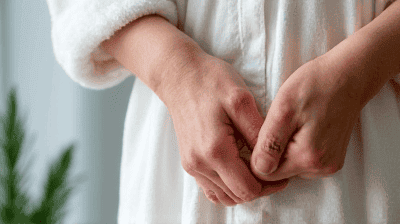
While it is impossible to avoid stains altogether, taking preventive measures can significantly reduce their likelihood.
Tips for Prevention
Treat Stains Immediately: Address stains as soon as they occur. Have your stain removal supplies ready and accessible.
Wear an Apron: When cooking or eating, use an apron to protect your clothes from potential stains.
Avoid Light-Colored Fabrics: If you frequently consume foods that stain, consider wearing darker or patterned fabrics.
Use Stain-Resistant Clothing: Invest in clothes made from fabrics treated to resist stains and spills.
Follow Care Labels: Always follow care labels on clothing concerning washing temperatures and drying instructions.
Handling Special Fabrics
Different fabrics require different treatment methods. Here are a few guidelines tailored for specific materials:
Cotton
- Durable and Versatile: Generally machine washable. Use hot water for white cotton items to lift stains.
Silk
- Gentle Care Needed: Use cool water and mild detergents; avoid soaking.
Wool
- Avoid Excess Water: Use water sparingly and always dry flat, avoiding hanging which can cause stretching.
Synthetic Fabrics
- Resistant to Stains: Commonly very durable but still need careful stain treatment to prevent setting.
Stain Removal Myths Debunked
It's essential to distinguish fact from fiction when it comes to stain removal:
Hot Water for Everything: Not all stains should be treated with hot water. For protein-based stains like blood, always use cold water.
Using Rubbing Alcohol on All Stains: While effective for ink, rubbing alcohol can damage some fabrics, so spot tests are essential.
Immediate Drying: Never put stained clothing in the dryer until the stain is completely gone; the heat can set the stain.
All-purpose Cleaners Can Be Used: Many all-purpose cleaners are not suitable for fabrics and may cause discoloration.
Professional Help: When to Call the Experts
Sometimes, stains might be beyond your abilities to remove. In such cases, it’s best to seek professional help. Here are signs you should consider this:
Persistent Stains: If a stain refuses to budge after multiple attempts.
Delicate Fabrics: When dealing with high-value or delicate items that need special care.
Large Stains: For substantial stains that may require specialized equipment or techniques.
Time Constraints: If you simply do not have the time or resources to deal with difficult stains.
Conclusion
Dealing with stubborn stains on clothing can be a frustrating experience, but with the right knowledge and resources, you can effectively tackle this common issue. Understanding the types of stains, having the right supplies, and employing effective removal techniques are critical to maintaining a clean wardrobe. Moreover, practicing good prevention habits and knowing when to seek professional help will ensure that you can keep your clothes in great condition for years to come.
By following this ultimate guide, you will be equipped with all the tools necessary to face any stain challenge that comes your way. Remember that the sooner you act, the better your chances of success! With diligence and care, you can enjoy your favorite garments without the worry of stains putting a damper on your style.

